A Visual Guide to Agent2Agent (A2A) Protocol
(it does not compete with MCPs).
AI-powered call analytics with AssemblyAI
Most companies only analyze 5% of their phone calls.
The rest? It’s untapped insight—just sitting in audio files.
With AssemblyAI’s Speech-to-Text and Speech Understanding models, you can extract powerful insights from 100% of your call data.
Accurately transcribe calls at scale.
Detect sentiment, topics, and pain points.
Auto-generate action items and QA feedback.
Summarize conversations by what went well (or didn’t).
Monitor brand risk and customer satisfaction in real time.
Start building phone call analytics with Speech AI →
Thanks to AssemblyAI for partnering today!
A Visual Guide to Agent2Agent (A2A) Protocol
Agentic applications require both A2A and MCP.
MCP provides agents with access to tools.
While A2A allows agents to connect with other agents and collaborate in teams.
Today, let's clearly understand what A2A is and how it can work with MCP.
If you don't know about MCP servers, we covered them recently in the newsletter here:
In a gist:
Agent2Agent (A2A) protocol lets AI agents connect to other Agents.
Model context protocol lets AI Agents connect to Tools/APIs.
So using A2A, while two Agents might be talking to each other...they themselves might be communicating to MCP servers.
In that sense, they do not compete with each other.
To explain further, Agent2Agent (A2A) enables multiple AI agents to work together on tasks without directly sharing their internal memory, thoughts, or tools.
Instead, they communicate by exchanging context, task updates, instructions, and data.
Essentially, AI applications can model A2A agents as MCP resources, represented by their AgentCard (more about it shortly).
Using this, AI agents connecting to an MCP server can discover new agents to collaborate with and connect via the A2A protocol.
A2A-supporting Remote Agents must publish a "JSON Agent Card" detailing their capabilities and authentication.
Clients use this to find and communicate with the best agent for a task.
There are several things that make A2A powerful:
Secure collaboration
Task and state management
Capability discovery
Agents from different frameworks working together (LlamaIndex, CrewAI, etc.)
Additionally, it can integrate with MCP.
While it's still new, it's good to standardize Agent-to-Agent collaboration, similar to how MCP does for Agent-to-tool interaction.
What are your thoughts?
We shall cover this from an implementation perspective soon.
Stay tuned!
Thanks for reading!


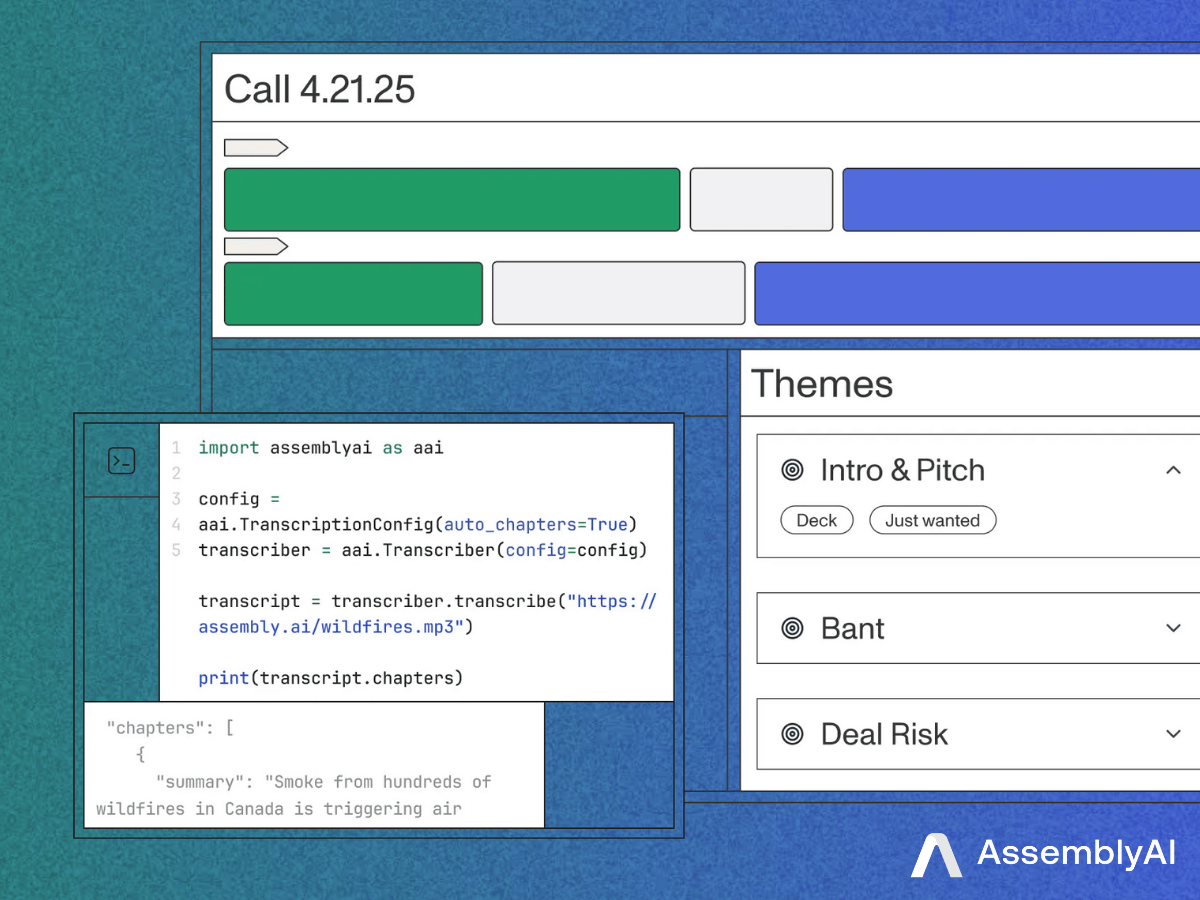
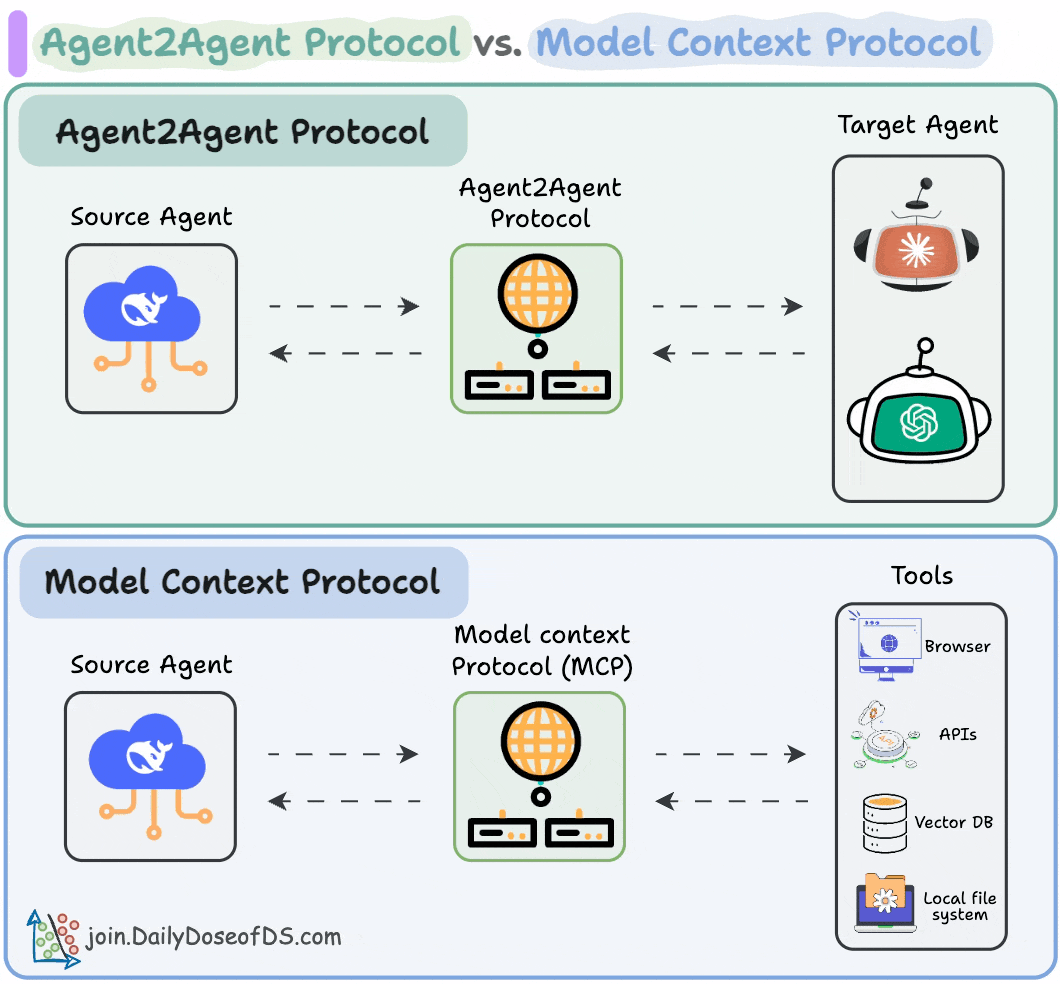

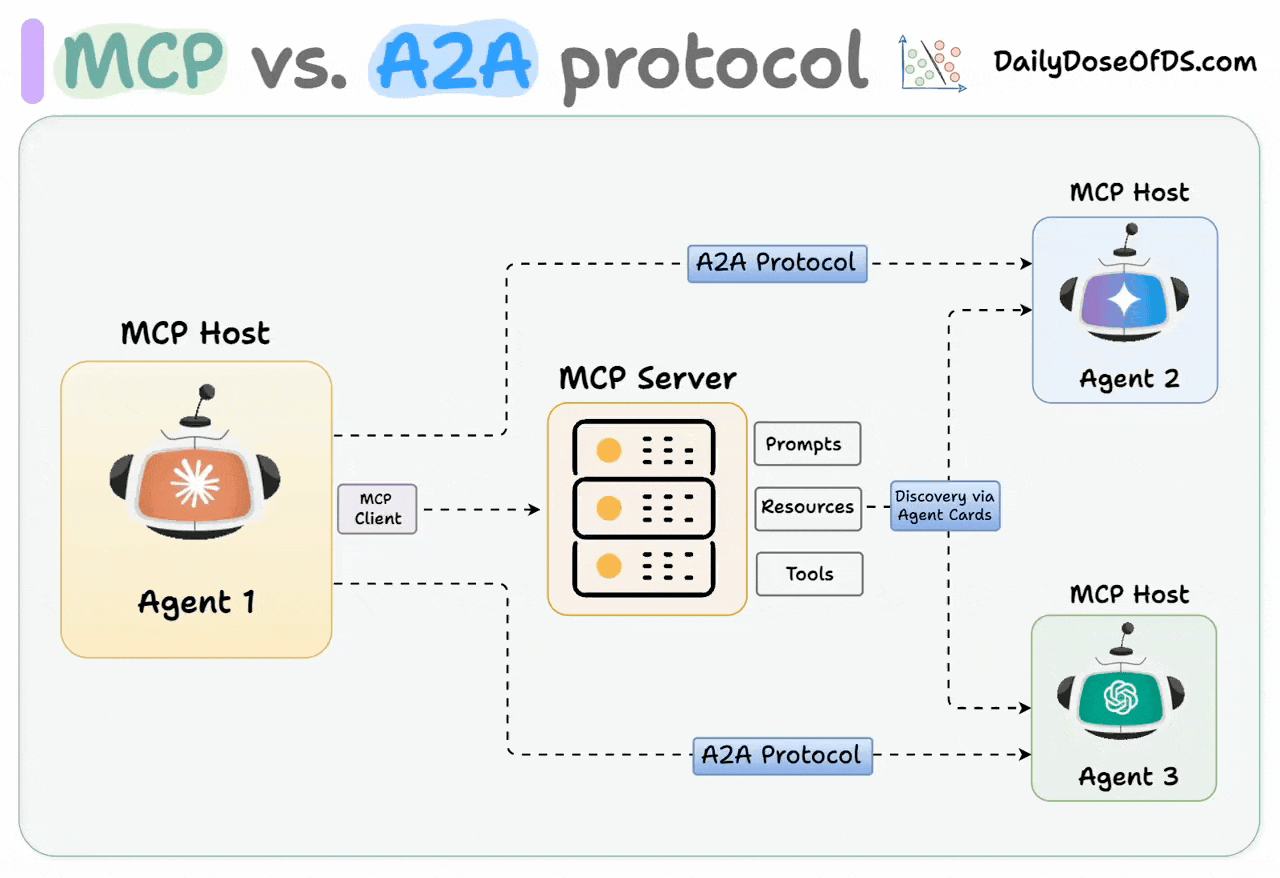
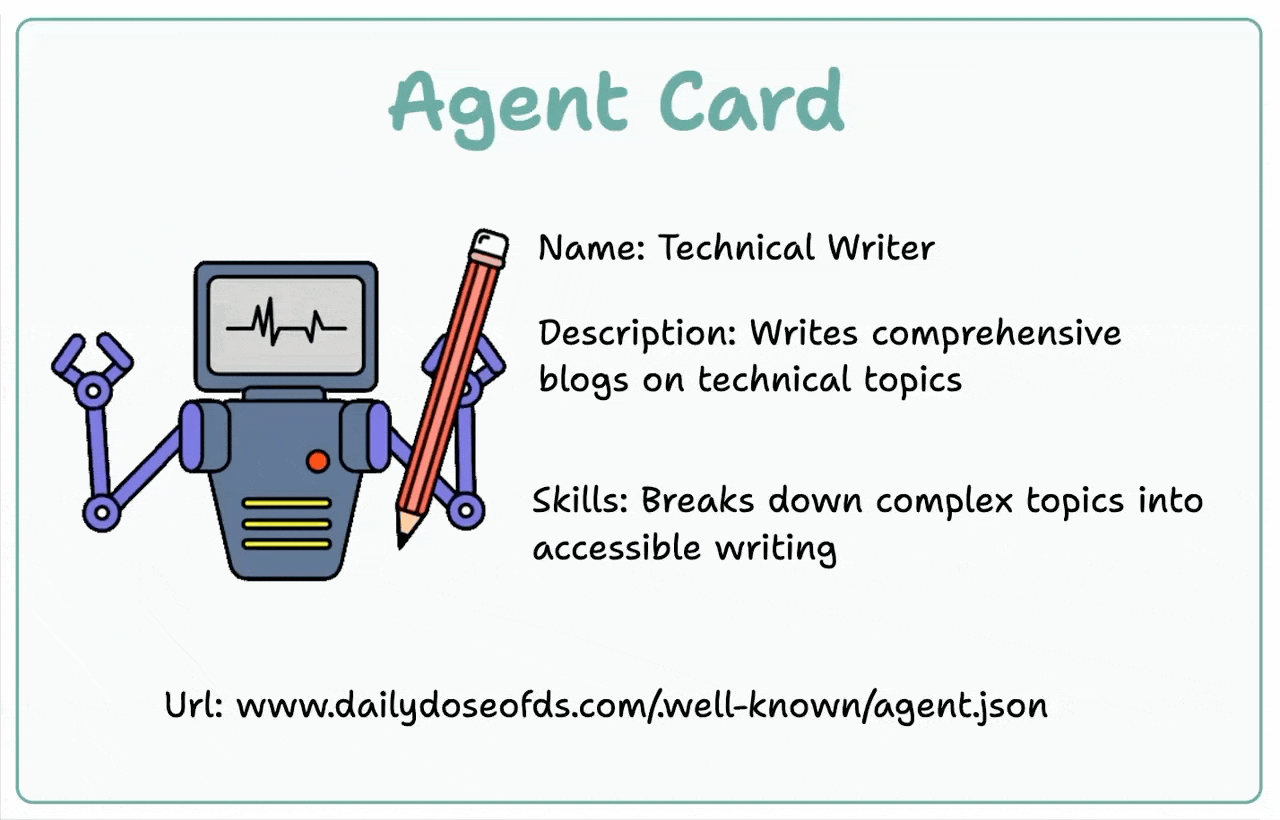
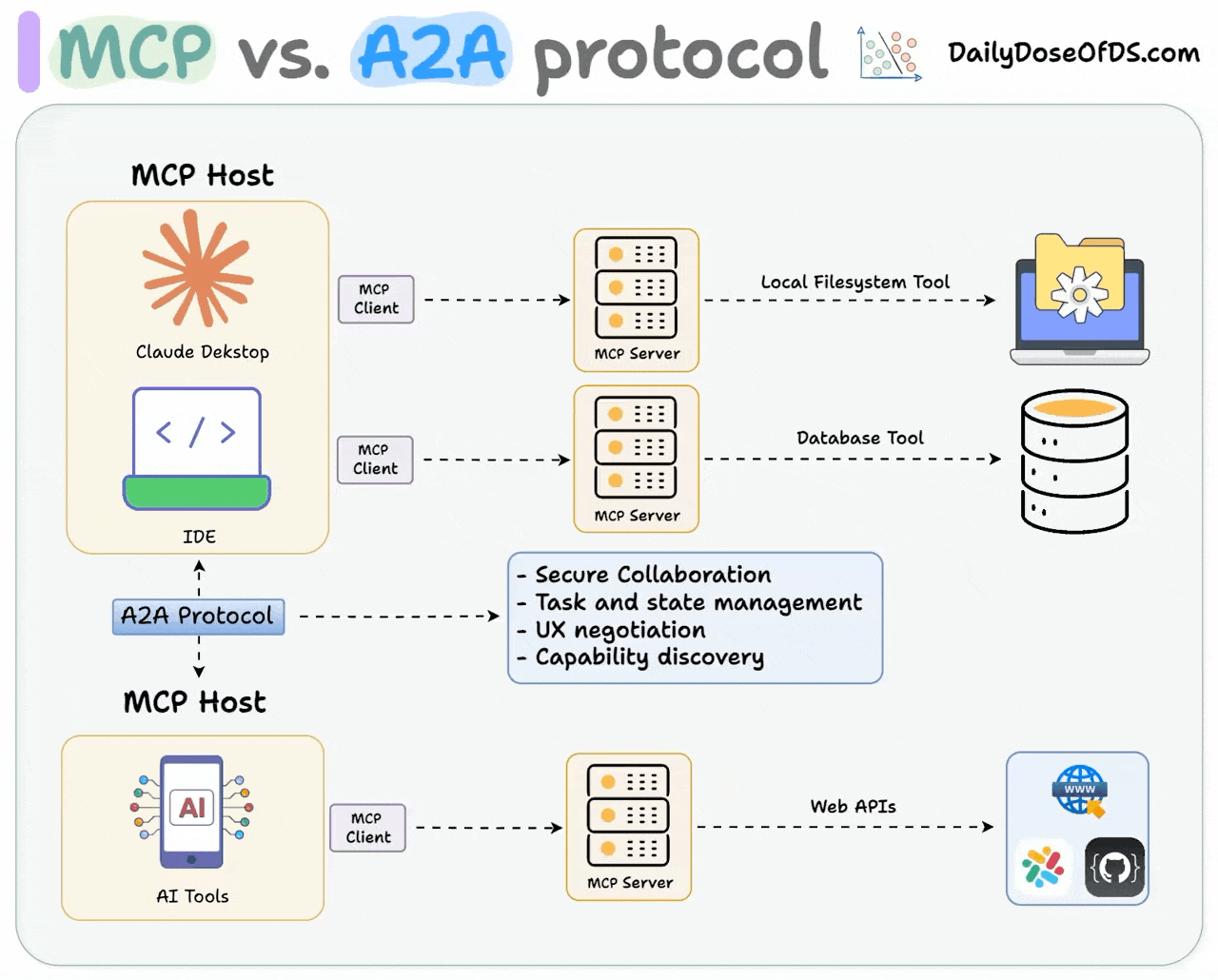
Where do you create those gifs?
Thanks for sharing this awesome article. I love to see the following use case if you can help: UI tasks will be handled by UI agents, while backend tasks will be managed by backend agents. The backend agents will require A2A-compatible authentication and authorization, and they'll be responsible for MCP tasks such as Jira integration and database communication.